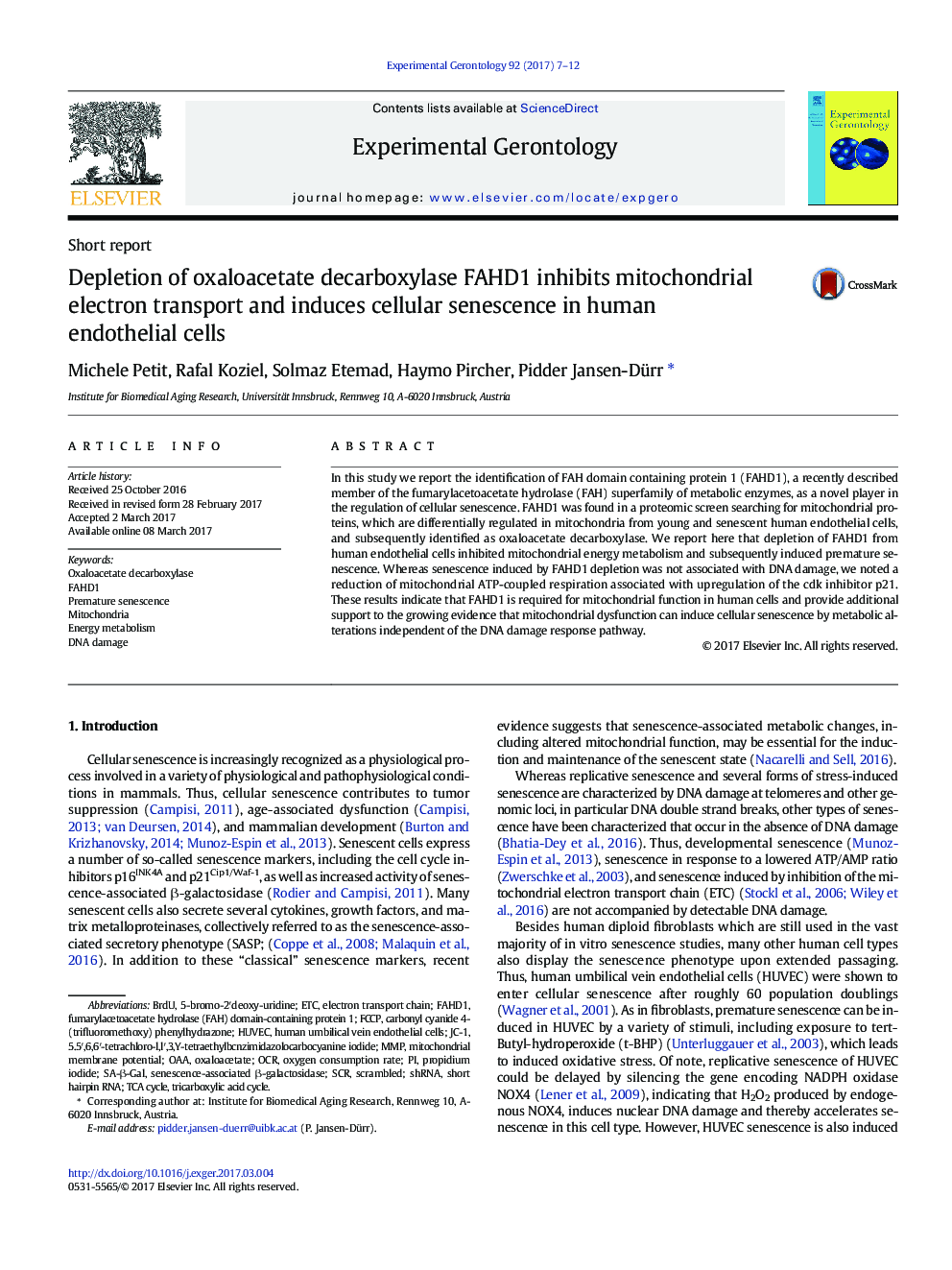| Article ID | Journal | Published Year | Pages | File Type |
|---|---|---|---|---|
| 5501573 | Experimental Gerontology | 2017 | 6 Pages |
Abstract
In this study we report the identification of FAH domain containing protein 1 (FAHD1), a recently described member of the fumarylacetoacetate hydrolase (FAH) superfamily of metabolic enzymes, as a novel player in the regulation of cellular senescence. FAHD1 was found in a proteomic screen searching for mitochondrial proteins, which are differentially regulated in mitochondria from young and senescent human endothelial cells, and subsequently identified as oxaloacetate decarboxylase. We report here that depletion of FAHD1 from human endothelial cells inhibited mitochondrial energy metabolism and subsequently induced premature senescence. Whereas senescence induced by FAHD1 depletion was not associated with DNA damage, we noted a reduction of mitochondrial ATP-coupled respiration associated with upregulation of the cdk inhibitor p21. These results indicate that FAHD1 is required for mitochondrial function in human cells and provide additional support to the growing evidence that mitochondrial dysfunction can induce cellular senescence by metabolic alterations independent of the DNA damage response pathway.
Keywords
MMPOxaloacetateOAAOCRSA-β-galJC-1shRNAHUVECFCCPshort hairpin RNAsenescence-associated β-galactosidaseDNA damageBrdUscrambledOxaloacetate decarboxylaseelectron transport chainHuman umbilical vein endothelial cellsEnergy metabolismMitochondriaOxygen consumption rateETcMitochondrial membrane potentialPropidium iodidePremature senescenceTCA cycletricarboxylic acid cycleCarbonyl cyanide 4-(trifluoromethoxy) phenylhydrazoneSCR
Related Topics
Life Sciences
Biochemistry, Genetics and Molecular Biology
Ageing
Authors
Michele Petit, Rafal Koziel, Solmaz Etemad, Haymo Pircher, Pidder Jansen-Dürr,
